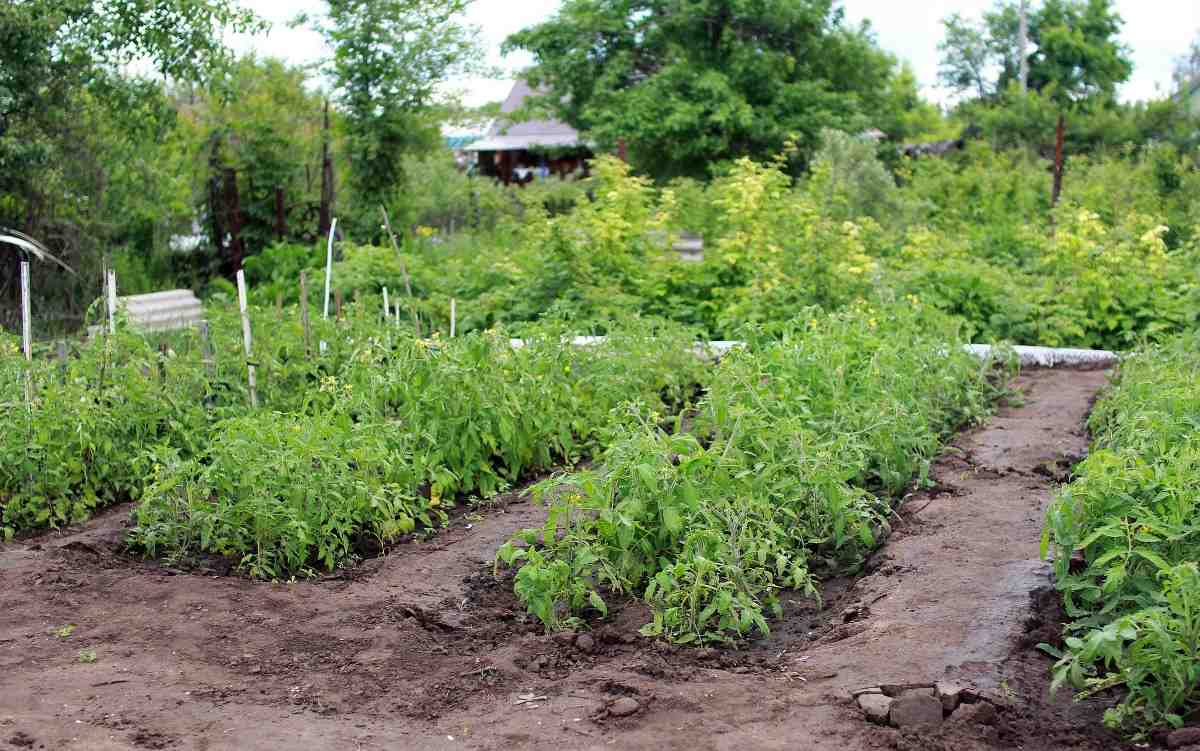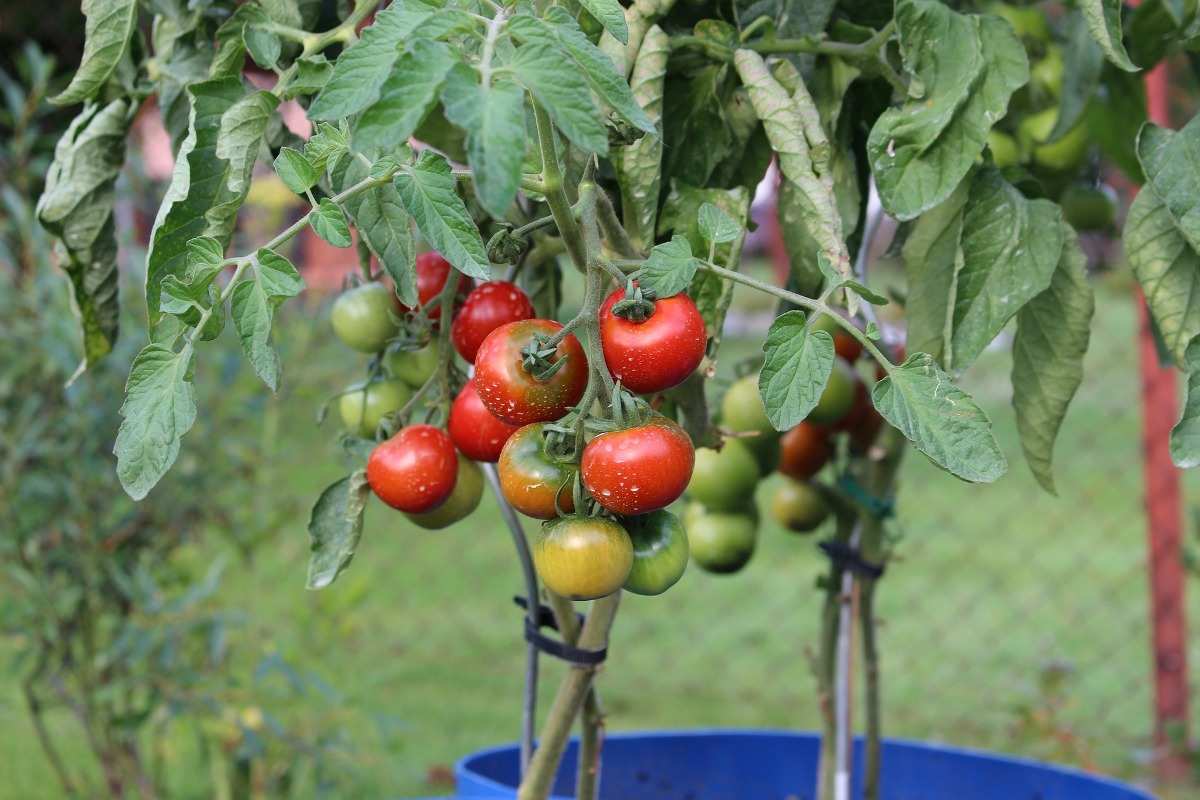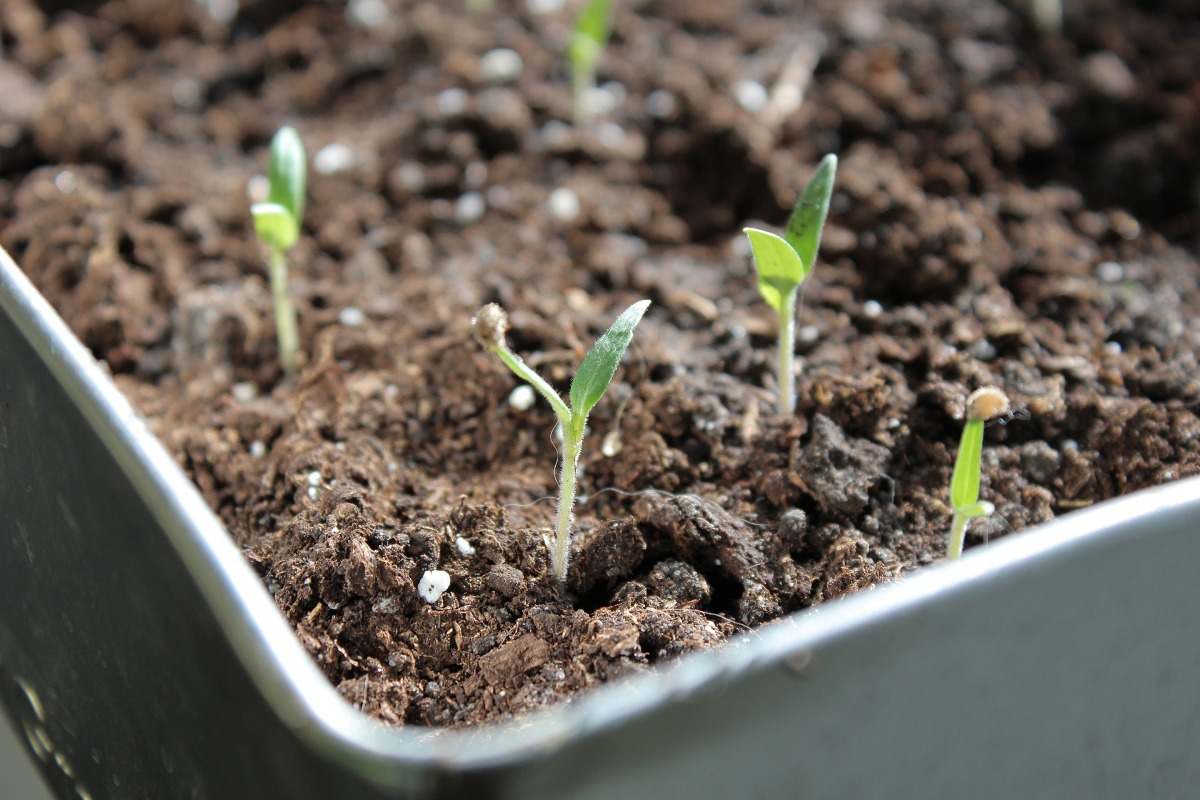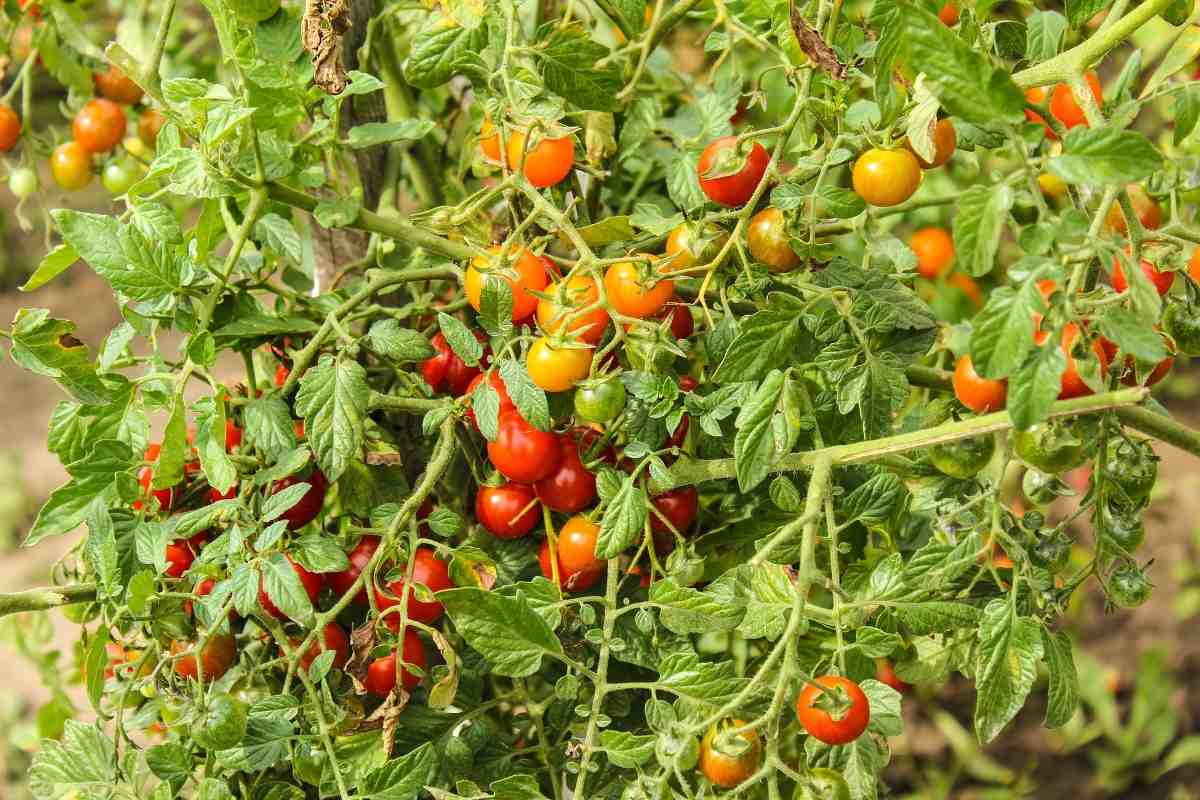Introduction: Tomatoes are easy to grow and provide plenty of fruit when given adequate space and support, such as stakes, trellises, in the garden, or a pot. The correct tomato plant spacing is dependent upon which tomato variety is being grown. The ideal spacing for tomato plants is between 24 to 36 inches apart. Spacing tomato plants any closer than 24 inches will reduce air circulation around the plants and can result in disease. Tomato spacing mainly depends on two factors; what types of tomatoes you’re growing and how you plan on supporting the plants.
A guide to Tomato Plant Spacing Basics
The spacing for tomato plants depends partly on how you grow them. When you use stakes or tomato cages to support your tomato plants, allow 1 1/2 to 3 feet of space between plants. When you grow your tomato plants without supports, letting them rest on the ground as they grow, allow 3 to 4 feet between plants. If planting tomatoes in rows, allow 3 to 4 feet between rows.

Tomato varieties
Tomato varieties are mainly classified as determinate or indeterminate. Determinate tomatoes are small, compact, stout-stemmed bushy plants. This type of plant grows to a certain height, flowers, and fruits all within a short period.
Indeterminate plants continue to produce, flower, and fruit until the first hard frost. In temperate climate zones, indeterminate tomato varieties will produce fruit over a 2 to 3-month period.
Spacing for determinate tomatoes
Determinate tomatoes produce to a certain height and stop growing. They flower and set fruit in a shorter period than indeterminate tomato plants. These tomato plants tend to be smaller in size and could be planted closer together than indeterminate types of tomatoes. Space determinate tomato plants about 1 1/2 to 2 feet apart and space row 2 to 3 feet apart, leaving enough room for caging, staking and harvesting plants.
Spacing for indeterminate tomatoes
Indeterminate tomatoes continue to grow; flower and fruit over a total growing season and can grow up to 8 feet or more in height. These plants want some type of support to keep their growth and spread under control. Spacing for an indeterminate type of tomato depends on the support method used. You can space staked plants about 1 1/2 to 2 feet apart with a row spacing of 2 to 3 feet. Caged plants need more room, so space plants 2 to 3 feet apart and allow 4 to 5 feet for row spacing. And indeterminate tomato plants grown in wire cages should be spaced 2½ to 3 feet apart, while a 3 to 4-foot-spacing can be suitable for indeterminate tomatoes allowed to sprawl over the ground.
Tomato spacing is important
There are main reasons to aim for well-spaced tomato plants;
The plants receive enough sunlight
Overcrowding tomato plants are going to lead to them receiving less sunlight than they need. Tomatoes love the sun, so you need to provide them with enough if you want a rich yield. They must receive full sun for most of the day.
You should not miss the How to Grow French Beans in Pots.

Heat-loving tomato plants require plenty of sunlight for healthy growth. If you crowd seedlings, the tomato plants will cast shade on their neighbors as they grow.
You prevent pests and diseases
Pests and diseases are two of the major concerns of anyone growing tomato plants in their garden. In terms of pests, the most common one is a caterpillar. These pests eat the leaves of the tomato plants. For you to get rid of them, you are going to have to pick them by hand. Since they live on the underside of the leaves, you’ll want room around the plants to properly pick them. If the tomato plants are placed too close together, this task is going to be arduous.
When it comes to planting diseases, late blight is the most common one. This is a fungal disease that will create spots on leaves and lead to rotten fruits. Close tomato plant spacing decreases air circulation and this means the leaves will take a while to dry after it rains, which tends to promote fungi growth. Tomato plants are susceptible to several diseases and if spaced too closely, insufficient air circulation can elevate the risk of disease.
Production
Spacing tomato plants too far apart that means you are leaving space for weed growth, losing valuable growing space, and reducing potential harvest.
Less competition
Airflow is decreased when tomato plants are crowded, but it also means they’re competing for water and nutrients.
You improve their nutrition
Apart from sunlight, tomatoes need water and nutrients to develop properly. You must provide them with some fertilizer periodically, ideally a slow-release one. The problem with tomato plants that are planted too close to one another is that will compete for water and nutrients.
Tomato plant spacing for container plants
A lot of people grow tomato plants in containers. A stake or a tomato trellis can help tomatoes develop, so you should consider containers that allow you to use some sort of support system. If you want to grow tomatoes and do not have the space required for a garden, and you can grow tomato plants in containers. Even when grown in containers, tomatoes require enough room to grow and benefit from the use of a stake or trellis.
You may also like the How to Grow Malabar Spinach on Terrace.

Container-grown tomato plants don’t take up space, which allows you to enjoy garden-fresh vegetables from a small garden or a patio. Container tomatoes can be planted in pots that are a minimum of 5 gallons (19l) in volume and 14 inches in diameter and placed just about side-by-side if you’re trellising vertically. For dwarf tomatoes, you require 2 1/2 gallons of soil for every plant in the container, plus enough surface area to space the plants 8 to 12 inches apart. Determinate tomatoes require 5 gallons of soil per tomato plant, plus enough area to space them 12 inches apart.
Cherry tomato plant spacing
Cherry tomatoes are a popular vegetable to grow for folks who are short on yard space. These little bushy plants are ideal for balconies, backyard, patios or even windowsills.
Tomato spacing in a raised bed
Growing tomatoes in raised beds are one of the easiest approaches to gardening. Raised beds range in height, starting at 6 inches. In general, the more soil depth that’s available to plants, the more freely their roots will grow. More soil holds more moisture, so a deeper raised bed will require less frequent watering.
Select a site for the raised bed that’s level and free of debris. Select a well-draining spot that’s close to a water source and receives at least 8 hours of direct sun daily. Tomatoes can be deeply planted since roots can form along the length of the stems and plant them at 18- to 24-inch spacing. Don’t worry about letting the tomato plants lean to one side; in a few days, they straighten up on their own. Water tomato plants regularly to avoid blossom-end rot, which is caused when the soil is allowed to dry out.

When growing tomatoes in a raised bed, you want to leave at least 18 to 24 inches of spacing between them to ensure that each plant gets enough light to thrive.
Roma tomato plant spacing
Roma tomatoes are determinate types, which means that the fruit ripens at one time, rather than continue through the season. Spacing Roma tomatoes is about 24 to 36 inches apart.
Tomato plant spacing in cm
Tomato spacing depends upon the type of variety grown and the season of planting. And normally the seedlings are transplanted at a spacing of 75-90 x 45-60 cm.
Tomato plant spacing in Greenhouse
Plant your tomato plants in a greenhouse is about 45cm (18in) apart, leaving 75cm (30in) between rows, and if you’re planting into a grow bag, limit yourself to two plants per bag.
Beefsteak tomato plant spacing
To grow beefsteak tomato plants in the home garden, you need stakes or a heavy cage to support the fruit, and it is important to learn all about the proper maintenance and care methods that effect healthy, bountiful beefsteaks.
A mistake made by those new to Beefsteak tomato plants is to underestimate the amount of space the plants require. They can grow as much as 8 feet in height and spread 2 to 3 feet wide, so the minimum spacing of 36 inches is a must.
Incase if you miss this: Steps of Seed Germination Process.
Gardening tips for growing tomatoes

- When planting tomatoes, give them sufficient space. If you plant them too closely together, they are more prone to pests, diseases and produce a smaller harvest. They are more difficult to care for. Plant dwarf tomato plants 12 inches apart and space staked plants 15 to 24 inches apart. Plants in cages or those growing on the ground must be spaced two to three feet apart. Very vigorous varieties, such as ‘Super steak,’ can need up to six feet between plants. To give adequate room for root growth, till the soil to a depth of at least 8 to 12 inches.
- Once you have planted tomatoes keep them well watered until the roots are established. And after that, deep soak them every 4 to 7 days. If it is hot and dry you may want to water every day, especially if they are in containers.
- Select a place with full sun and well-drained soil. When you water, take care to not splash soil onto the plant leaves and stem as this promotes disease. And don’t skimp on the mulch. A good layer of mulch, 2 to 3 inches, will help maintain the soil consistently moist, cutting down on blossom end rot, as well as prevent weeds from taking over. Just keep the mulch away from the crown of the tomato plant.
- The soil should have a pH level of 6.0 to 7.0 and have good drainage. You don’t want tomato plants to be sitting in a pool of water after a thunderstorm.
- Water plants in the early morning. This gives the plant the moisture it wants to make it through a hot day. Avoid plant watering late afternoon or evening.
- Mulch 5 weeks after transplanting to retain moisture and to control weeds. Mulch keeps soil from splashing the lower tomato leaves.
- Feed your tomato plants once a month with a blend that is high in phosphorus and low in nitrogen. Too much nitrogen will result in lots of plant leaves, but not much fruit. Start fertilizing when the fruits first start to develop and stop as reach maturity. Generally, tomatoes should be fertilized no more than three times per season.
- You can give tomatoes a little organic fertilizer when transplanting the plants into the home garden. The best method to do this is to add a handful of granule organic fertilizer to the bottom of the planting hole. Mix the fertilizer into the soil well with hand or a hand shovel.
- Sprinkle another handful of the granular organic fertilizer again about 3 weeks after transplanting the tomato plant. Simply sprinkle the fertilizer around the tomato in a 3 to 5-inch diameter circle around the stem of the tomato. Avoid letting the fertilizer touch them stem of the plant.
You might be interested in Growing Leafy Vegetables in Pots.